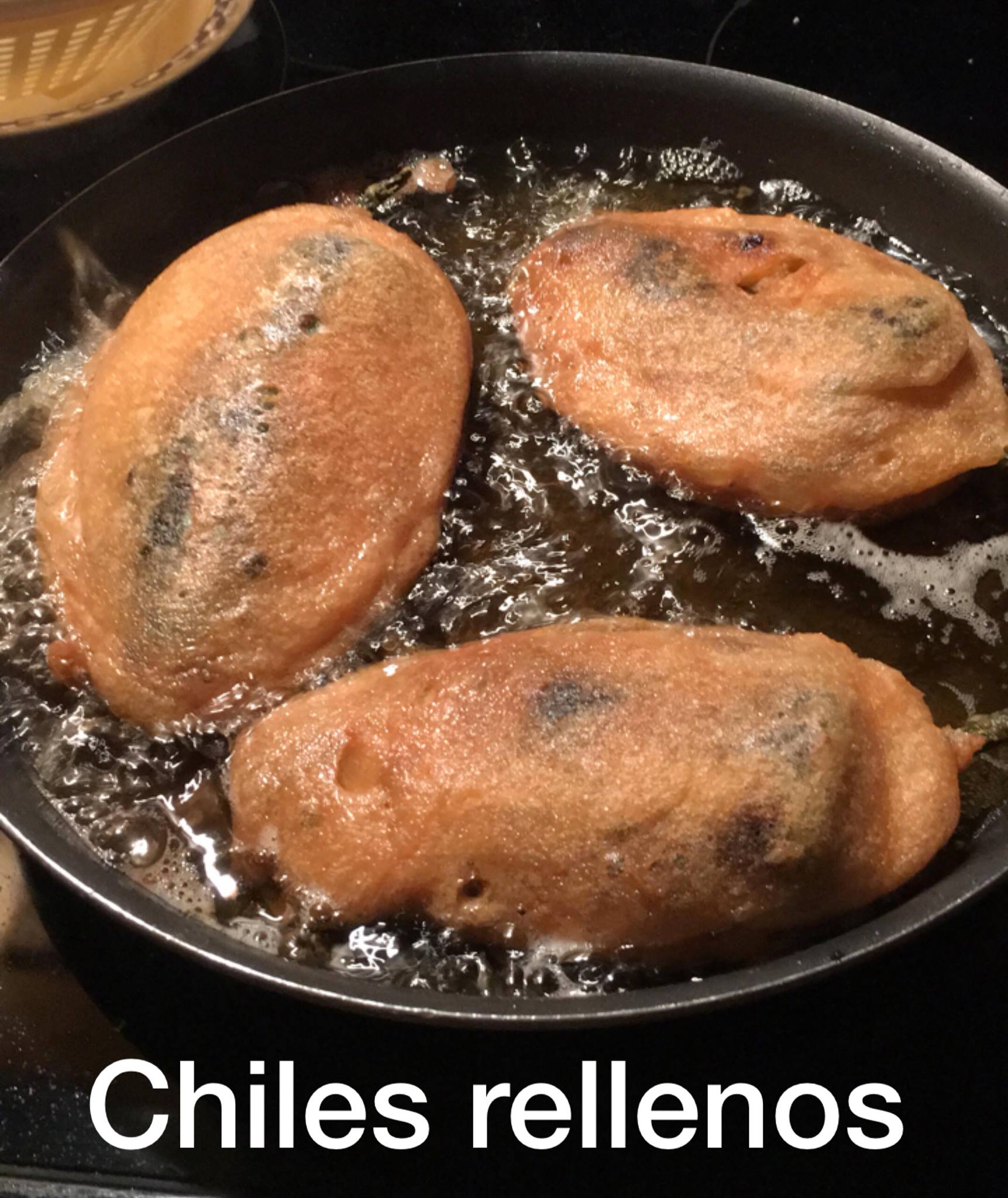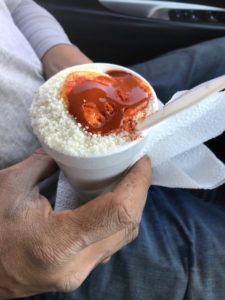Comida de Cuaresma
Estilo Mexicano
Lent is religiously observed by orthodox and practicing Catholics around the world. Lent is a forty day period in which most Catholics fast and repent.This time period begins on Ash Wednesday and ends until Easter Sunday. Coincidently, Ash Wednesday arrived on the same day as Valentines this year (February 14, 2018). Which left most Catholics debating whether to celebrate Valentine’s day or not.
I personally do not celebrate Valentine’s day. Coincidentally I am not a practicing Catholic but I do like to follow family traditions. Cuaresma is very significant to me because of that sole reason. Lent has always been an event in which my family and I cook and eat together. The entire experience is wholesome. The experience brings the combination of various sensations of warmth, prosperity, faith and protection into the forty day ordeal. The overall experience is gratifying.
Like most catholics, my family observes this period by fasting. We do not eat beef or pork during this time frame. We alternate for vegetarian dishes or sea food. There are two traditional Mexican plates that most Mexican families turn to during lent. The Chile Reyeno with Spanish rice, and capirotada. Of course there are more food options to choose from, but these three recipes are a yearly family tradition passed down from my maternal grandmother. I can go through an entire list of traditional cuaresma food, but I will simplify it to these two tradition Mexican recipes, for the sake of this cook book entry. Thus, it will only include my top favorite traditional food dishes for lent.
Chiles Reyenos

These chiles are deep fried in vegetable oil. The oil cooks the egg white and melts the cheese inside the chilis.
History
Chile reyenos are a traditional Mexican dish. The plate itself originated in Puebla, Mexico after Mexico won its independence from Spain in the 19th century. It is said that the dish was prepared for a Mexican general named Agustin de Iturbide. This particular dish has a symbolic importance for the Mexican people. It signifies the country’s liberation of Spanish conquest and the beginning of a new political infrastructure.
The green pepper represents the regions agriculture because this specific chili pepper originates from this region of Mexico. Each state in Mexico has a native vegetable or plant that it is known for. Puebla is known for its Chile Poblanos. Chile Poblanos are used in a variety of dishes. They can be roasted, fried or pureed. They are commonly roasted in order to peel the waxy skin off. This procedure is followed regardless of the recipe or dish being prepared. Whether the chili pepper is pureed for green spaghetti or stuffed with cheese, it must be roasted. The roasting process is an essential component of the chili poblano. The mixture of cheese, egg batter and chili pepper are a combination of European and Mexican ingredients.
Most people will agree that the preparation of this food dish is time consuming and tedious. I agree. It is time consuming but the end results are worth the struggle. The dish is delicious beyond belief. The stuffed peppers and covered in egg bater and deep fried in corn oil. The cheese melts with in the pepper once submerged in the hot cooking oil. Once the chili pepper is cooked properly in oil, it is served with two traditional sides, pinto beans and rice. It can also be served with a variety of topping such as sour cream, salsa de jitomate y cilantro and pomegranate. Each topping is optional. It’s really up to personal preference. The recipe is cost efficient. It is not at all costly to make. The pound of chili pepper cost approximately .79 cents to 1.79 cents per pound. The price depends on whether it is in season. Typically, this specific chili pepper is higher in price during Lent.
In addition the preparation of Spanish rice works as the perfect side dish for stuffed chili peppers. The Spanish rices tastes better with the main course of Stuffed chili peppers. Also, Spanish rice is easy to prepare and cheap to make. The rice takes approximately 15-30 minutes depending on the heat. The rice should be cook preferably on low heat so it can cook thoroughly.
Personally, this dish evokes childhood memories, specifically the preparation process. As a child I remember that my mom, seven sisters and I would share individual tasks during the food preparation of the Chiles. I was in charge of the eggs. I would separate the egg yolks from the egg whites and whisk the egg whites separately from the egg yolks. This process produced a sense of euphoria in me. My mother would toast the peppers on the comal. My sisters would prepare the Spanish rice, salsa de jitomate and frijoles de la oya. Which translates to tomato sauce which consists of pureed tomato, chopped cilantro and onion. This depends on food preference too. Frijoles de la Hoya are pinto beans from a pot.
Also, the chile reyeno recipe varies . Alot of people prepare it differently than how my family and I prepare the chiles. Some people add ground beef to the combination. Some people don’t fry the chile because they prefer to eat them merely toasted. The recipe varies from region to region or house hold to house hold. In Central Mexico the chile reyenos are stuffed with cheese and in other regions they are stuffed with a combination of cheese, ground beef and vegatbles. No matter which recipe you decide to use, the end result is always taste worthy. You should try it!
Chiles Reyenos for 8 Persons
Ingredients:
8 Chiles Poblanos
1 Lb. queso fresco
10 eggs;
1 cup of baking flour
6 cups of cooking oil
Spanish Rice
Ingredients:
2 cups of Rice
4 cups of water
1 tomato
2 spoons of chicken bouillon

Preparation
Chiles Reyenos
Rinse the chiles
Toast the chiles on a hot skillet until the exterior skin is ready to peel
Place the chiles in a zip lock bag for 10 minutes
Remove the skin from the chiles
Stuff the chiles with cheese (queso fresco)
Cover the chiles in flour
Preheat the skillet and fill with oil
Separate the yoke from the egg whites
Whisk the egg whites preferably with an electric egg beater until the egg whites are nice and fluffy.
Add the yokes to the mixture until the egg whites turn to a light yellow color.
Dip each Chile into the egg mixture individually
Dip the chiles into the hot skillet carefully
Fry the chiles to a light brown and place them into a strainer to remove excessive oil.
Spanish Rice
Rinse the Rise
drain the rice throughly until dry
Pour 1/3 cup of oil into a pan and heat the oil
Pour the rice into the pan after the oil is hot
Brown the rice
Blend 1 whole tomato and i cup water in a blender
Pour the tomato mixture into the rice
Add 3 cups of water
add 2 spoons of chicken bouillon
Cover with a lid and wait 15-20 minutes till it cooks properly
Capirotada

One of my all time favorite dessert on earth is my mother’s capirotada. My family has enjoyed this dessert for generations. This specific recipe was passed down from my maternal grandmother to my grandmother. I don’t know the specifics behind to as how my grandmother came upon the recipe, but I assume it was passed down from her mother to her and so on. This Mexican bread pudding has become a traditional dessert for my family during lent. It is made specifically only during lent and sometimes when my and my sisters’ pregnancies. In this occasion both requisites were met. It was made upon special request by my older sister whom so happens to be pregnant. Coincidently, it is the time if lent for most Catholics.
My mother recalls having this specific desert (Mexican Bread Pudding) only during the time of Lent. She remembers having her entire family both immediate and distant relatives over at their home during the meal preparation. She says that the meal was divided amongst each female family member. My mother’s older sisters would always prepare and bake the capirotada. She says that this meal would have to feed a family of approximately thirty people or more sometimes. The preparation of the food would take an estimated three to four hours to complete. This time lapse seemed like an eternity for most of the family, especially since all of them would fast until the food was ready to eat. Fasting for long periods of time during this one time of year seemed worth it.
I would like to agree. This dessert is one of my favorites because of emotional significance of family traditions passed down from mother to daughter. It’s a cross-generational tradition that continues to captivate family members’ attention. My maternal aunts maintain their mother’s cookings by teaching their daughters our grandmother’s recipes. By doing this, our grandmother’s memory lives on through the food served during Lent. It is almost as if she is still alive because her recipes are not altered and are followed step by step. Thus, keeping the authenticity of the dish. Through these dishes I get to learn very important information on my grandmother. Unfortunately, I did not have the pleasure to have met my maternal grandmother in person.
History
So adding to historical context of the origins of Capirotada or Mexican bread pudding, I decided to examine various articles on the recipe and found little to no information on it. Some authors suggest that the recipe was first recorded on paper in the 17th century. Others have doubts about the authenticity of its cultural origins. The recipe has a combination of both Catholic and Jewish attributes. The Jewish have a similar recipe to that of the Mexican bread pudding. The bread pudding has a religious association in both cultures.
Nevertheless, it has played an important role in my childhood memories. I associate this dish with my mother’s cooking because she gives it her own twist. Each layer represents each maternal generation that is embedded in my sisters and I. It links us to our cultural roots and to our native country, Mexico. It is a tradition that I expect to pass down to my children because in doing so, I continue the family tradition passed down from my grandmother and my mother. To ignore this tradition would be like a disservice to future generations.
The Mexican pudding bread is abundant in flavor. The moistness of the bread is the result of the warm milk that is poured on top of each layer of bread. The touch of coco and almonds adds a crunch and flavor to the recipe. The rainbow assorted candy beads cover the top layer just like it would on any other dessert.It also transcends cultural and socio-economic barriers. It is inexpensive to prepare and can be easily baked within fifteen to twenty minutes. It is similar to regular pudding bread sold at local bakeries in South Los Angeles, California. The only difference is that the Mexican bread pudding has toppings similar to that of a cake. It can be compared to a tres leches cake.
Capirotada/ Mexican bread pudding for 8 Persons
Ingredients:
20 bolillos
1/2 gallon of whole milk
2 pilonzillo
1/2 onion
6 sticks of Cinnamon
1 box of raisins
2 oranges
1 small bag of walnuts
1 lb. of fresh cheese
Preparation
Slice the bread into small portions; preferably inch
Place the slices onto a flat baking pan
Bake them in the oven for 15 minutes
Layer the toasted bread into layers on the baking pan
Begin to spread the dry ingredients to each layer(walnuts, coco and oranges
Boil 1/2 gallon of milk and 1/2 gallon of water
Mix the piloncillo and half an onion into the milk; make sure the piloncillo dissolves in the milk substance
Add the milk substance over the bread filled pan
Bake the sheet for approximately 25 minutes in the oven until it browns
You can whatever toppings you like; my family adds sprinkles, raisins and cheese.
I hope you enjoy!


 Personally, the corn vendor is my favorite vendor because it carries a symbolic undertone for me. Ironically, the first bond between my first child occurred during pregnancy.The bond was made through food. The first food craving I had while I was pregnant was for corn in a cup (Chaska). Since then, my son and I share this connection. As a matter of fact he loves corn more than I do. He’s eaten corn on a stick since early infancy. He was approximately 10 to 11 months when he first bit into a corn and he’s loved it since. I believe he loves corn more than his father and I.
Personally, the corn vendor is my favorite vendor because it carries a symbolic undertone for me. Ironically, the first bond between my first child occurred during pregnancy.The bond was made through food. The first food craving I had while I was pregnant was for corn in a cup (Chaska). Since then, my son and I share this connection. As a matter of fact he loves corn more than I do. He’s eaten corn on a stick since early infancy. He was approximately 10 to 11 months when he first bit into a corn and he’s loved it since. I believe he loves corn more than his father and I.
